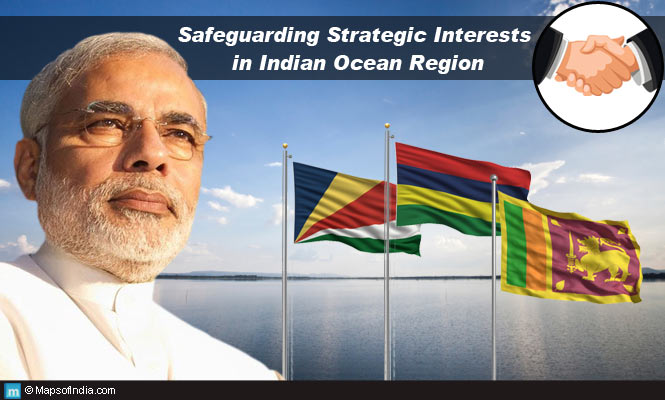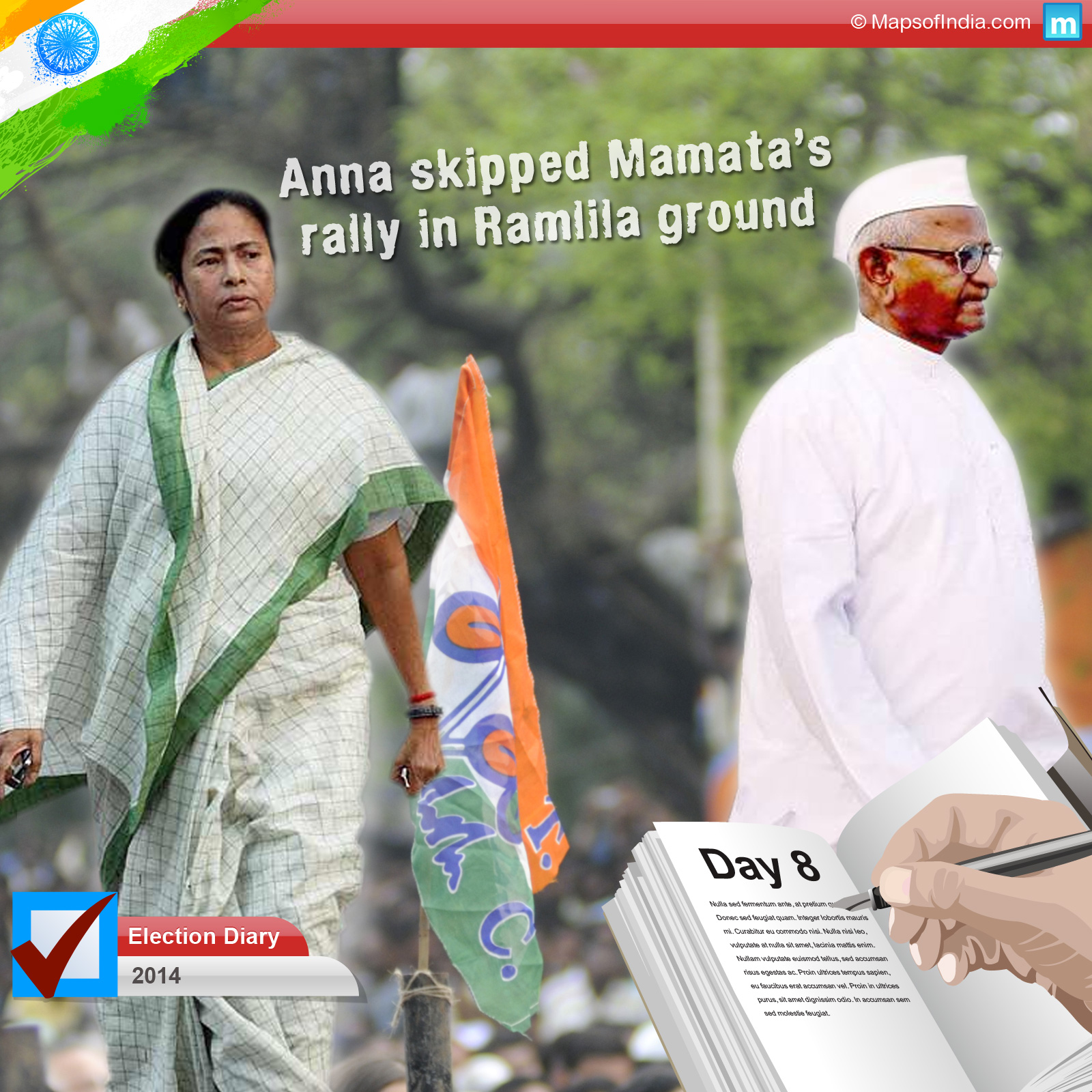It is not new. In fact, New Delhi’s Indian Ocean strategy began to unfold in the early 1990s when India opened its economy and trade to the world. Indian Ocean is the world’s key energy and trade seaway. According to the Journal of the Indian Ocean Region, more than 80 per cent of the world’s seaborne trade in oil transits through the Strait of Hormuz, the Strait of Malacca and the Bab-el-Mandab Strait – all parts of the Indian Ocean. Yet, New Delhi offered no significant push to this strategy. Nothing explains it better than the fact that Narendra Modi is the first Indian Prime Minister to undertake bilateral visit to Seychelles in 34 years, Mauritius in 10 years and Sri Lanka in 28 years.
It is India’s non-animated outlook towards these nations and bureaucratic inertia when it comes to safeguarding its strategic interests that is said to have given China a reason to build up its presence in the region. China’s Silk Route plan is seen as a cloak to disguise its design in Indian Ocean. In Seychelles, Mauritius, Maldives (where Modi cancelled his visit due to ongoing political strife) and Sri Lanka, China has created a sizable political and diplomatic capital for itself by giving financial aid to them. In consonance with its silk route plan, China has pledged to invest $40 billion on development of infrastructure of the countries in the Indian Ocean region. Once it happens, it will provide Chinese army an opportunity to show their assertiveness in the region. Aware of such a move and its impact on the country’s territorial, economic and maritime interests, New Delhi has started taking Indian Ocean strategy earnestly.
Grounds Covered in Seychelles
It became evident when New Delhi and Victoria (Seychelles’ national capital) signed four agreements, besides renewing their security commitments in the course of Modi’s one-day visit. India has traditionally been the key provider of armaments and training to Peoples’ Defence Force of Seychelles. According to the Ministry of External Affairs Secretary (West) Navtej Sarna, it is “actually a very strategically located set of islands of the Indian Ocean”.
In Modi’s presence, India handed over Coastal Radar Surveillance System and one Dornier aircraft to enhance maritime security capability of Seychelles. India has also promised to give one more Dornier aircraft to this Indian Ocean nation. To further bolster security of the Indian Ocean region, the two countries, have agreed in principle to become a full partner in the maritime security cooperation between India, Maldives and Sri Lanka. Together with Mauritius, Seychelles is also an observer at the Indo-Lanka-Male National Security Advisor level dialogue.
The high point of Prime Minister Modi’s visit to Seychelles was the latter’s handing over an island to India on lease. On paper, the island given by Seychelles will be leased for tourism purposes, but in reality, as per sources, it would be used for surveillance purpose. In 2012, China had announced using one of the 115 islands of Seychelles as a refuelling port for its navy. Over the years, in order to firm up its position in this country, China pumped in millions of dollars in development of infrastructure and capacity building projects. In fact, relations between China and Seychelles took a significant jump when Chinese President Hu Jintao visited the country in 2007.
Despite this, some experts say that Seychelles is closer to India than China. To buttress their argument, they highlight demographic profile of Seychelles wherein 10 per cent of total population is of Indian origin. But then, what remains unnoticed is the Indian PM’s persistent effort to impart a personal touch to the diplomacy. Considered a master in that art of diplomacy, he told media in Victoria, “This is a very short visit. I would have loved to stay longer. Anyone who visits this wonderful country will find it hard to leave.”
Calculated Move in Mauritius
A similar effusiveness was seen in Mauritius where Modi reached the second leg of his three-nation visit. Bestowed with a rare honour of being the chief guest at Mauritian National Day celebrations, he was also given a rare opportunity to address the country’s National Assembly. An African nation of high strategic importance, Mauritius is regarded as “Chhota Bharat” (Small India) as 70 per cent of its population is of Indian origin. In accordance with its commitment for development of Mauritius, India offered line of credit worth $500 million for the country’s infrastructure projects. Issue related to Double Taxation Avoidance Treaty (DTAA) was also raised. A long pending decision on revising DTAT was taken, with both parties agreeing to fast-track the process “to prevent abuse of the convention”.
Barracuda – a 1300-tonne India-built patrol vessel was commissioned in Modi’s presence. At the event, Modi harped on the importance of Indian Ocean region for New Delhi, “Indian Ocean region is at the top of our policy priorities. Our vision for Indian Ocean region is rooted in advancing cooperation in our region”. It was the first ever export of India-built warship to a foreign country. New Delhi plans to supply 13 more warships to Mauritius, which has, in fact, decided to make India its preferred partner in developing its security capabilities. Cementing their strategic pact, Mauritius agreed to give Agalega Islands to India. To improve its air surveillance capabilities in the Indian Ocean region, New Delhi has been persuading Mauritius for years to hand over both North and South Agalega islands on lease. These two islands are located closer to India than Mauritius.
Symbolic Visit to Sri Lanka
Safety, security and stability of Indian Ocean region – the three objectives were highlighted when he reached Sri Lanka. Modi, who was the first Prime Minister on a bilateral visit to Sri Lanka after Rajiv Gandhi in 1987, also addressed Sri Lankan parliament. On the second day of his Sri Lankan visit, he travelled to Anuradhapura, a world heritage site, which had been ancient political capital of the island country. From Anuradhapura, he flew off to Talaimannar where he flagged off a train between Talaimannar and Madhu Road. India extended $800-million line of credit for the island nation’s various rail projects. In Jaffna, Sri Lanka’s Northern Province’s capital, he handed over homes to the internally displaced people. India is constructing 50,000 homes in the Northern, Eastern, Central and the Uva provinces of Sri Lanka for those who were displaced during the civil war. So far, 27000 houses have been built.
In all, the visit reflects India’s attempt to shore up its profile in the region with the help of business, trade and investment. Cementing security pact and enlarging the scope of cultural and people-to-people contacts are other avenues that India is exploring to create a significant clout and take on the juggernaut called China. Yet, how effectively such mechanism helps India checkmate China in the region that touches Australia, Southeast Asia, South Asia, West Asia and the eastern part of Africa, only time will tell.
Read Also:
India’s foreign trade – Rising beyond mere relations
India’s Foreign Policy
A long way to go for India
Modi Foreign Visits Map
Details of PM Modi’s Historic Visit to UAE
Expectations from Modi’s impending visit to Japan
Modi’s US visit
PM Modi’s Tour of Russia and Central Asia
Modi’s Three-nation Visit: China, Soth Korea & Mongolia
Modi Visit Boosts Indo-Nepal Relations
India Needs To Revive International Relations





